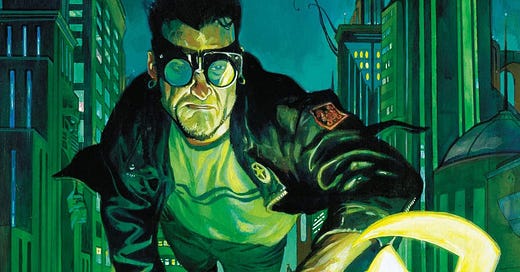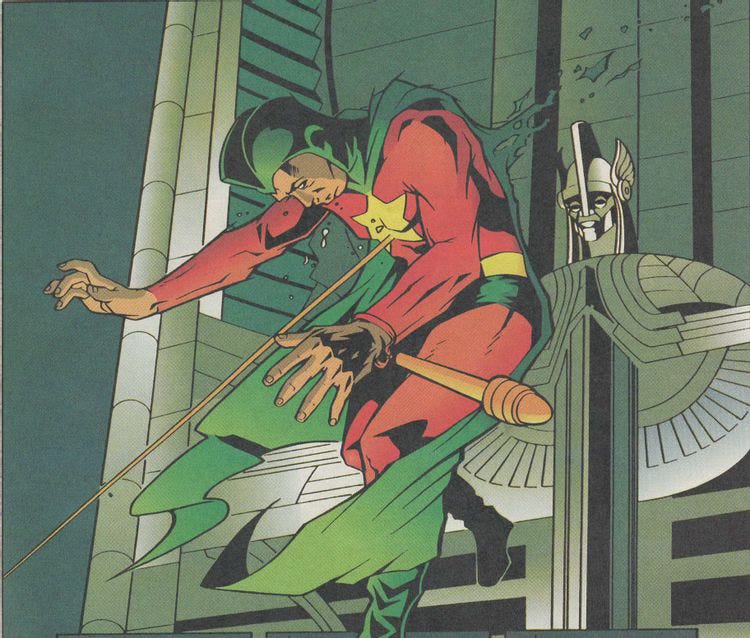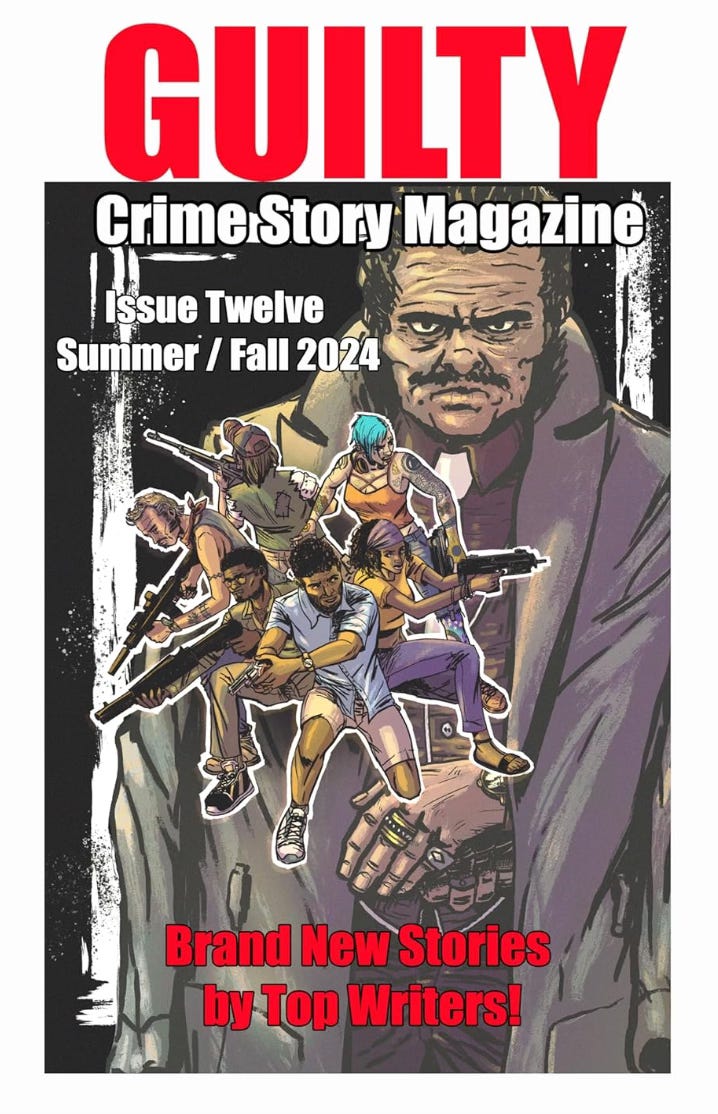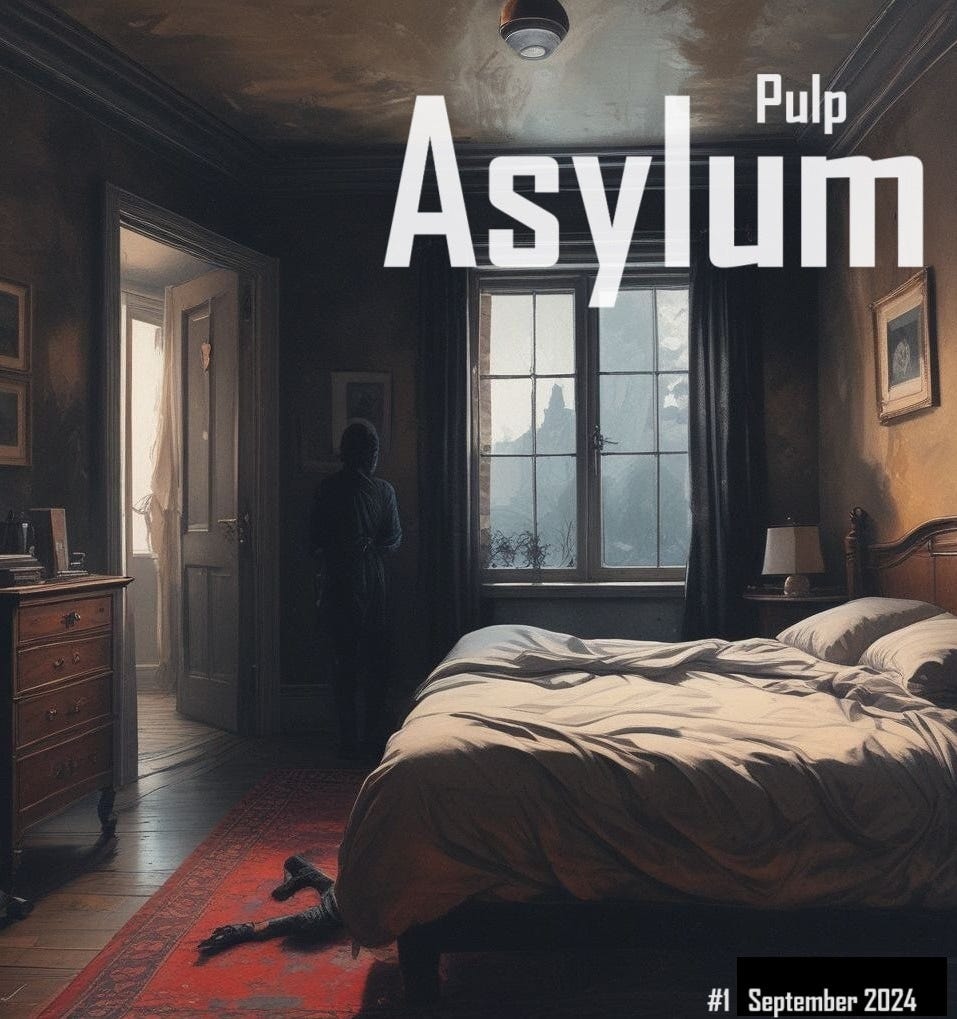I had to pause collecting comics in college. I didn't have the money to buy them, or the space in my various dorm rooms to keep them (back then, CDs were taking up whatever extra money and space I had available). I was so busy at the time, I didn't really feel the loss. But when a comic book shop opened up within walking distance of campus (the delightful and long-gone Captain Spiffy's Superhero Emporium), I couldn’t resist the siren’s pull.
This was in the early 90s, the days of the obscenely-overlong/overhyped crossover events, when "The Death of Superman" ran through dozens of DC comics, and "The Clone Saga" over at Marvel was about to ruin thirty years of Spider-Man's history. Comics were in the “guns & pouches” era of art, and while there were plenty of treasures that I discovered from that period in later years, as far as taking a hiatus, I picked a relatively good time to rest on the mainstream stuff.
Eventually, I got a job as a busboy at a fancy on-campus restaurant, and had a little extra coin to drop, so every so often, I'd hoof over to Captain Spiffy's and buy me a little something.
One of those somethings was issue #0 of DC’s “Starman.”
The story of Jack Knight, son of Ted Knight, who in his youth was the famous Golden Age hero Starman, who fought Nazis and crime with his “cosmic rod” (please, no jokes), which allowed him to fly and shoot energy and whatever else randomly popped into the writers’ heads back in the 40s.
Jack Knight is the ur-Gen-Xer. A collector of antique pop culture, all he wants is to open a junk shop, sleep with random women, and… well, that’s pretty much it. He laughs at his father’s past as a superhero, and disdains his older brother David Knight, who is expected to take over the mantle of Starman, now that his father has aged out of adventuring.
Except, on one of his first nights out as Starman, David Knight is killed in action.
The city comes under siege as one of Ted Knight’s old enemies goes on a rampage, trying to kill the entire Knight family. Shit explodes, people die, and Jack Knight is forced to use one of his father’s old cosmic rods (I SAID NO JOKES) and take to the sky to fight the villain. Jack becomes a very unwilling superhero, refusing to wear a costume, opting for a leather jacket and a star badge. When the crisis is over, and Jack has acquitted himself a hero, his father asks him to take over as Starman. Jack reluctantly agrees, provided his father promises to use his genius to do research and help mankind, rather than fight crime and cook up silly superhero devices.
There had been unwilling superheroes before, there had been heroes who didn’t wear costumes, there had been heroes who didn’t fit the typical shorts-worn-over-the-tights model. But there was something special about the way writer James Robinson wrote Jack Knight that really cracked a certain moment in time.
First off, Jack Knight was terribly selfish. Not in a mean-spirited way, just in the way most early 20-somethings are when they first get a little freedom, a taste of being a grown-up, and their first instinct is to blame all the shit that’s gone wrong in their lives on their parents.
Sadly, I identified.
I also identified with Jack’s journey - over the course of five or so years, he becomes closer and closer to his father, as they both soothe the hurts they’ve caused each other over the years. Fortunately, I had far less to soothe over with my own parents; I just had yet to come to that realization that my parents also happen to be human beings that don’t have all the answers, and weren’t put on this earth just to sire me.
Second, Starman was one of the early superheroes to adopt the jeans and black leather jacket look that sorta became typified with the “X-Men” movie a few years later. He did have a “costume” of sorts - he’d wear a pair of goggles to protect his eyes, and the jacket had a giant star design on the back - but sometimes, he fought with the jacket tied around his waist, sometimes he wouldn’t have the jacket or goggles. Sometimes he fought naked. Truth.
The comic is fantastic. Jack battles a number of weirdo villains, vestiges of DC’s past. Solomon Grundy, the Mist, the Shade, the list goes on. Jack is constantly questioning why he’s doing this, he’s extremely inexperienced, so his hero fights are pretty tenuous. Most of the time, if he can talk his way out of a fight, he’ll actually try that first, rather than hitting.
Robinson also took great pains to tie his Starman to all the other DC characters who shared the name over the decades. “Starman” is one of those DC concepts that they tried to revisit, over and over, without much success - one Starman was a mullet-headed chump from Arizona (you’d think I’d be the first in line to buy such a thing, given that’s more or less my origin story; especially with Roger Stern writing it, but I never did), another Starman was an alien who spent very little time on Earth - and Robinson had to sorta twist into some painful knots to rope them all together, but in the end, it really made it feel like a family, and a legacy.
I’ve read through the series a few times - it definitely has started to show its age, with the constant pop culture references that, even when well-done, smell of Tarantino’s influence. The initial art was done by Tony Harris, who has a great balance of comic and pseudo-realism in his work. The later art by Peter Snejbjerg is jarringly different. I got used to it in time, and grew to enjoy it, but it really was a strange shift mid-way through the series.
A big thing I loved about the series, and it’s become more common now, but wasn’t as much back then - Robinson was really into world-building. He created a new locale in the DC universe, Opal City, and proceeded to fill in the backstory like it was a Stephen King or George R. R. Martin epic. Stories and histories of the city’s past were common, with an occasional full issue being dedicated to “Times Past,” where we’d see something from years or decades earlier that would initially seem unrelated, but eventually become germane to the plot. Gangsters, pirates, superheroes, supervillains, it was a rich and fun tapestry.
One story that weaved through the Times Past that struck me particularly was taking an old supervillain, the Rag Doll, and turning him from just another goofy old villain, into a Charles Manson-esque cult leader. The story is perfectly told - in an early issue, Jack wears an ironic T-shirt of the Rag Doll, a counterpart to Axl Rose wearing a Charles Manson T-shirt in the 90s. His father, not mad, just disappointed, tells Jack the story of all the people who died because of the Rag Doll, and Jack, for one of the first times in the book, realizes that his intention to be funny and ironic doesn’t actually forgive him for doing something tasteless, or worse, thoughtless.
(A lesson I myself had yet to learn at that point, unfortunately, but I like to hope I got better.)
Another thing I loved was that Robinson would do an annual “Talking With David” story, where Jack Knight would be granted one night every year to talk to his dead older brother. At first, they have to get past the old wounds and resentments, but as the series goes on, these meetings become ever more important to Jack’s journey as a hero.
And then, there’s that - Jack’s journey as a hero. In most cases, when a creator makes a character for a comic book company, you can look forward to that character being squeezed for all they’re worth, put on lunch boxes, Happy Meals, cartoons and movies, long past the interest and life of the creator. Jack Knight, who was a somewhat autobiographical mix of Robinson and Harris, has been one of the few exceptions. He spent five or six years as a hero. Then, when he learned he was the father of an infant son, he immediately decided to retire, so he could be a proper father, as his own father hadn’t quite been. He passed the cosmic rod to another hero (OKAY FINE, IT SOUNDS LIKE A DICK JOKE, OKAY?!), he sold off his pop culture junk, and drove into the sunset, headed for San Francisco.
And Jack Knight hasn’t been seen much since.
Extremely rarified in an industry that hauls all its dead and musty IP out of the closet every few years just to keep the trademarks and copyrights fresh.
I don’t know what deal DC has with Robinson to keep Jack Knight on the shelf - it seems mostly like a gentlemen’s agreement to honor the idea of a hero retiring instead of dying, like almost all others do when they’re shoved back in the closet. I imagine someday, someone will get it in their head to bring Jack Knight back. And it could be good, if they honor that idea of an unconventional superhero. I don’t know what to hope for. There’s been plenty of stuff that’s been revitalized over the years that I love, other stuff that I can’t imagine why they thought it was a good idea.
So, until that inevitable day, I highly recommend Robinson’s “Starman,” the superhero for thems that maybe don’t dig superheroes.
My short story, “Bastards of a Lesser God,” is in Guilty Crime Story Magazine!
And don’t forget “Plastic Nest,” at Pulp Asylum!
On “The Hold Up,” for election season, we’re doing “Primary Colors!”
And don’t forget “Sensory Overload!”
© 2024







